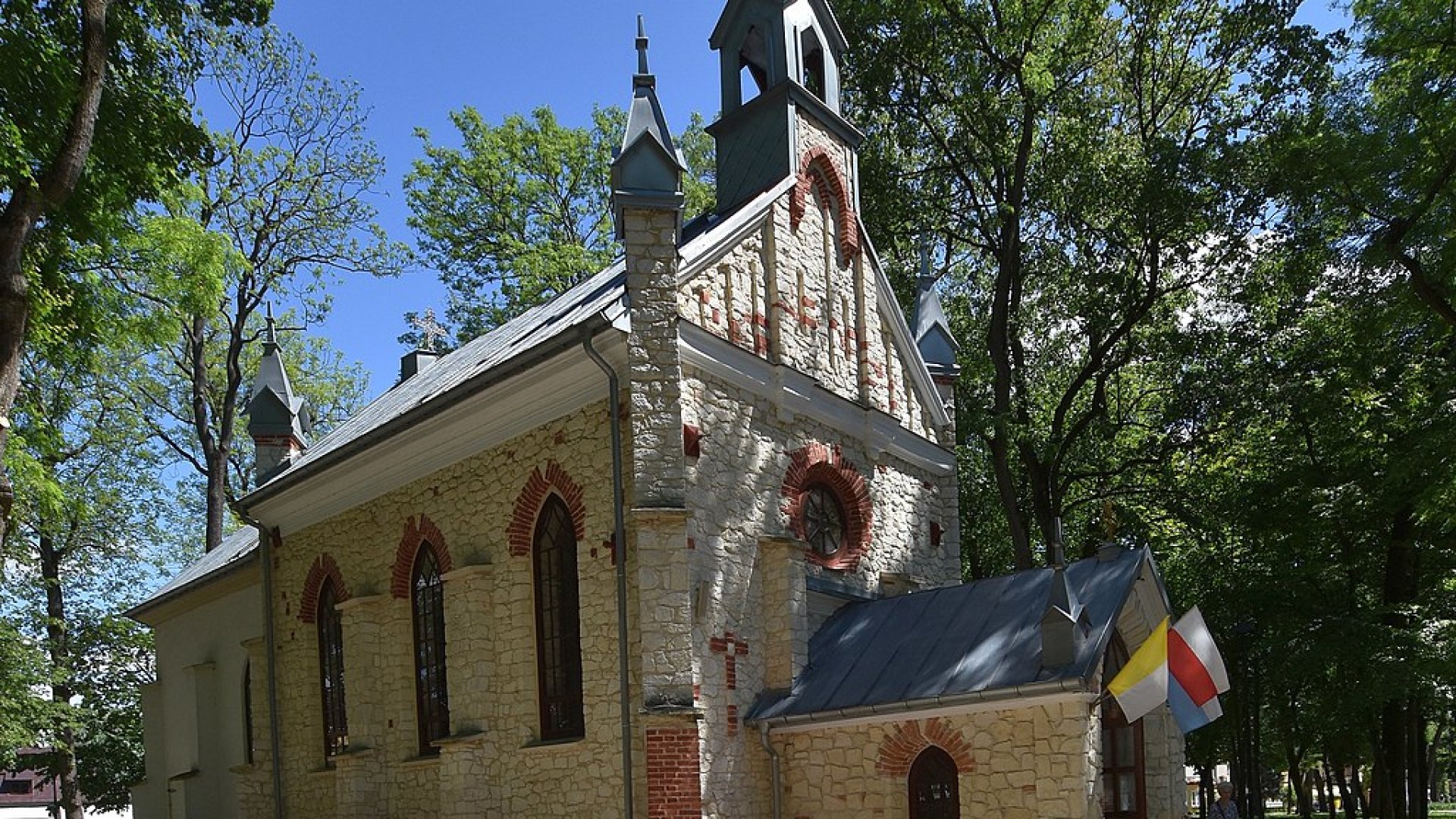The Chapel of St. Anne in Busko-Zdrój is a neo-Gothic structure built in 1888. Situated on the highest elevation of the Health Resort Park, near Sanatorium Marconi, it is an important architectural and historical element of the health resort.
The idea of building the chapel arose in the 1880s among spa guests who wished to have a place of worship near the sanatoriums. The Russian authorities, under whose control Busko-Zdrój was at the time, delayed granting permission to construct a Catholic church. Taking advantage of the absence of the local Russian official, a decision was made to quickly begin construction. Thanks to excellent organization, the chapel was built in just three weeks, and upon the official's return, it was accepted as a fait accompli.
The chapel is a single-nave building with a rectangular chancel. The zinc-coated roof is adorned with two smaller turrets and one taller one with a steeple. The main altar features a painting of St. Anne, the patroness of the chapel, and the flat ceiling is painted with the mysteries of the Rosary. The altar and the confessional were crafted by the sculptor Łabęcki from Piotrkowice.
In 1907, a vestibule and sacristy were added, increasing the functionality of the building. From 1983 to 1993, the chapel served as the parish church of St. Brother Albert’s parish, after which it returned to its role as a health resort chapel.
The Chapel of St. Anne is not only a place of religious worship but also a testament to the determination of the local community and spa guests in achieving a common goal. Its rapid construction in difficult political conditions is an interesting episode in the history of Busko-Zdrój. Today, the chapel remains an important point on the city's tourist map, attracting both the faithful and lovers of sacred architecture.



